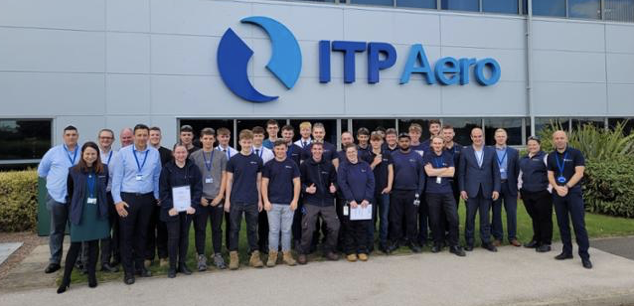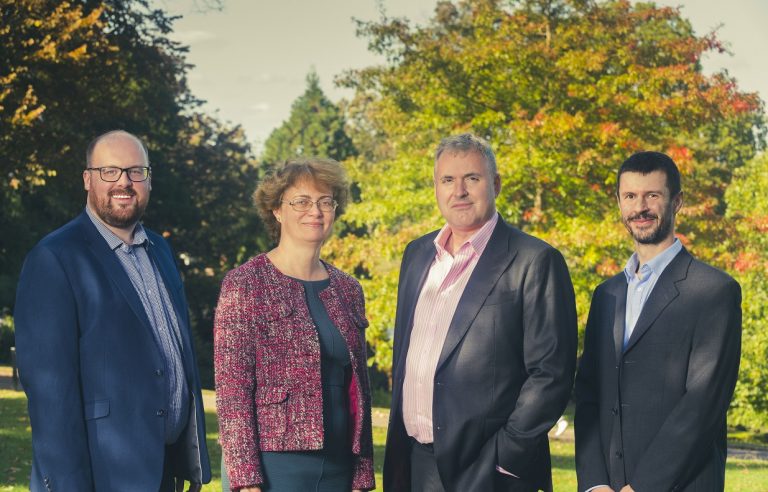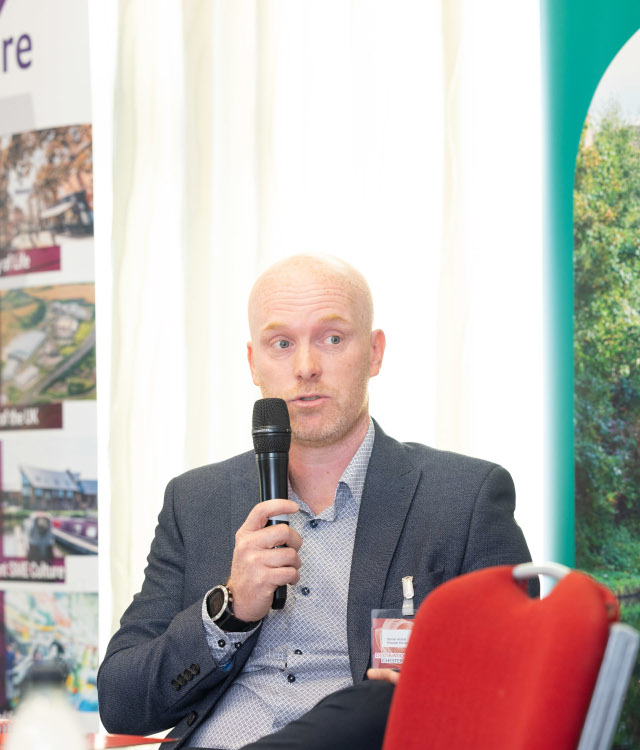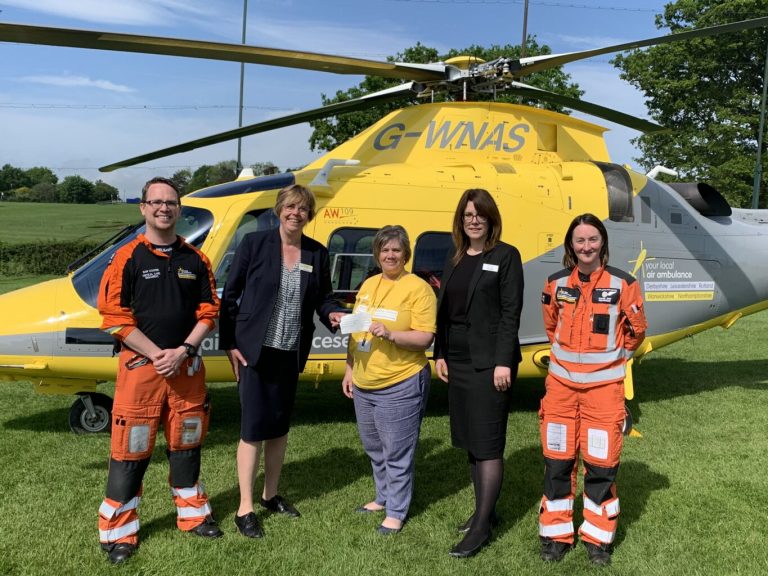Tuesday, November 18, 2025
A Long Eaton entrepreneur has bought the national franchise that he joined as a start-up business nine years ago with ambitious plans for UK-wide expansion.
Liam Hobbs was the second franchise holder of More Than Loft Ladders when he took on the Nottinghamshire area in 2013.
Since then, he has built up his business and added the Derbyshire and South Yorkshire areas, and now employs nine people at the Meadow Lane site – operating six vans across the area.
The company, which has won several awards for customer service and feedback, will continue to provide loft storage conversions for homeowners across the three counties under the leadership of his Mr Hobbs’ wife, Kelly.
Meanwhile, Mr Hobbs will support the seven More Than Loft Ladders franchise holders who cover a wide area from Liverpool to Northampton and he plans to expand the network with an enhanced package of business support.
Mr Hobbs explained: “I have learnt a great deal about running and growing a business in the past nine years and I now want to focus my efforts on supporting the current and future More Than Loft Ladders franchise owners across the UK to achieve their goals.
“We are developing enhanced support packages ranging from accounting to marketing that will be available to franchise holders and I will be actively recruiting hard working and ambitious tradespeople who are keen to take the plunge and start their own business supported by us.
“I have also learnt how to deal personally with juggling business and family life and am keen to support other franchise holders on a personal level to ensure their mental wellbeing.”
He continued that loft storage conversions was a growing market with homeowners keen to put wasted space at the top of their homes to good use either for storage or, for example, a hobby space.
“It also makes financial sense to insulate a loft rather than see money on heating bills literally fly through the roof.
“Furthermore, the volatile mortgage market also means that many people are more likely to expand the living space they have now at an affordable price rather than moving and taking on bigger payments.
“As a franchise business, we have built our reputation over the years by offering the full service and, as the name suggests – we are more than a loft ladder company. Although this is obviously an important feature, we also install hatches, part or full loft boarding insultation, lighting and smoke alarms to transform dark and forgotten lofts into usable space.
“With a solid reputation and growing customer demand, I am confident that our growth plans will be achieved, and I look forward to providing personal and practical support to the franchise holders across the UK.”
ITP Aero, the Hucknall-based aviation propulsion manufacturer welcomes the decision of the European Union’s Clean Aviation programme to proceed with over €700m of funding for 20 aviation research and innovation programmes from across the industry.
Following the evaluation of first Call for Proposals, a proportion of this funding, subject to successful completion of grant preparation, will enable ITP Aero and partners, to carry out ground-breaking research that will accelerate sustainable propulsion and decarbonisation research.
The Clean Aviation Joint Undertaking is the European Union’s leading research and innovation programme for transforming aviation towards a sustainable and climate neutral future. The four projects in which ITP Aero participates (HEAVEN, HE-ART, CAVENDISH and TheMa4HERA) will focus on three main technology pillars:
Ultra-efficient aeronautical architectures to address short and medium haul needs with innovative gas turbine configurations to help reduce emissions.
Hybrid and electric architectures by promoting research into new hybrid electric engine architectures and their integration.
Disruptive technologies for hydrogen-powered aircraft. To enable aircraft and engines to exploit the potential of hydrogen as an alternative fuel.
The four Clean Aviation programme projects in which ITP Aero participates are in addition to the ENGRT (EU Next Generation Rotorcraft Technologies) project of the European Defence Funds (EDF) awarded on July 2022. The ENGRT project will focus on the next generation EU military rotorcrafts. The project will include the analysis of future needs, key future rotorcraft features and capabilities, alternative rotorcraft platforms, flight demonstrators and simulators. The project will also produce a military rotorcraft technology roadmap, strategies for modularity and manufacturing, life-cycle analysis and maintenance concepts.
Erlantz Cristobal, Executive Director of Technology and Engineering at ITP Aero, said: “ITP Aero is focused in spearheading the transition towards sustainable propulsion systems and this milestone will build on our existing know-how to help accelerate technological breakthroughs in line with our commitment to be a carbon neutral company in 2050″.
Latest monthly research from the local branch of national insolvency and restructuring trade body R3 reveals that the Midlands is the UK region with the highest number of companies with late payments outside Greater London.
R3’s figures for September, which are based on an analysis of data from business intelligence provider Creditsafe, show that 78,601 Midlands companies had invoices on their books last month which were overdue for payment.
The R3 research also indicates that local entrepreneurs are becoming more cautious, with the number of East Midlands start-up companies falling to 2030 in September from 2279 in August. In the West Midlands, the number of start-ups in September decreased to 5032 from August’s figure of 5726.
R3 Midlands Chair Eddie Williams, a partner at PwC in the East Midlands, said: “This research indicates the negative impact of the current economic climate on local businesses.
“Trading conditions are proving to be extremely challenging, not least because we are heading into the winter with rising supply and energy costs on top of a market which is still recovering from the effects of the pandemic.
“For those business owners with significant concerns about their situation, the sooner professional advice is sought, the more opportunities may be available for finding the best possible outcome. Many R3 members offer a free initial consultation to those who are looking for such help and want to explore their options.”
Streets Chartered Accountants, a top 40 UK accountancy practice, is delighted to announce the founding of Streets Whittles Chartered Accountants.
The announcement follows the merger of the Colchester and Mersea island practice of Whittles with Streets Chartered Accountants, a mid-tier multi regional practice.
When asked about the merger, Rachel Skells the lead partner for Whittles, said: “This merger is a great match, both in terms of client focus and cultural fit and we are very much looking forward to working with, and getting to know, our new colleagues.
“Myself and my fellow partners made the decision to merge the firm with Streets because we believe it is in the best interests for all concerned. In terms of size, a three-partner firm has the benefits of a boutique firm but also a number of underlying challenges. Now that Whittles is part of a wider thriving practice, we can confidently promise greater continuity of service to our clients and greatly improved career prospects for our team.
“We also believe our clients may potentially benefit in that the combined firm will also be able to offer a wider range of services including areas of specialist corporate and private client tax planning, international advice and personal financial planning.”
Commenting on the merger and what it means to Streets, the firm’s Managing Partner, Paul Tutin, said: “With Streets’ existing offices across the East of England, including Cambridge and Newmarket and further south in Stevenage and London, we have been looking to establish a presence in Essex.
“Whilst we considered opening a new office in the county, we really wanted to join up with another liked minded firm. We were therefore delighted to enter into a conversation with the Whittles partners, Rachel Skells, Michael Greene and Dan Insley. Very early on in our discussion it was clear that we shared by the same vision and values for the profession and for supporting our clients. This certainly made the process of merging much easier, even enjoyable. A great start to our new future together.”
“By coming together both Whittles and ourselves will be able to capitalise on our respective expertise and will be better placed to grow and develop to support the needs of both existing and future clients. We also feel that the merger brings exciting opportunities for our team members and for new recruits who can join a progressive and expanding practice. With Streets Whittles offices in Colchester and Mersea, we now have 19 offices from Manchester in the north to Brighton in the south.
“Whilst many large firms have moved to more regional models, Streets remains committed to and focused on looking after clients that live, work and operate businesses in the local area. This approach is very much at the heart of our strategic focus for growth, which is likely to include further mergers of likeminded firms. Our aspiration is to become a top 20 UK practice by 2030.”
Nottingham City Council is looking to review 550 of its assets by the end of next year with a view to selling them and raising much needed funds to pay off its debts.
The council headed off intervention by Government commissioners when it managed to reduce its 1.2 billion debt by £200 m although an Improvement and Assurance Board (IAB) now oversees council improvements and has been given a targeted list of requirements to fulfil.
Cllr David Mellen, City Council Leader, believes that selling property and land no longer required by the council is just “one of the ways” it could fill its coffers, stating that such an approach is necessary “at a time when our Government grant is drastically reduced and we are unable to borrow due to the involvement of the Improvement and Assurance Board.”
The independent board has been working with the council to help develop and implement a medium-term financial plan. It became even more closely involved in September after the Government decided against appointing commissioners to take over certain decision-making functions at the council.
The updated financial plan is to be discussed at a full city council meeting on Monday (October 31) along with documents revealing the cost of the IAB’s findings and continued oversights by the council.
Woodall Homes has announced a gated development of nine luxury homes in Derbyshire.
Nine two and three-bedroom detached bungalows will be available at the development on Newbold Road, boasting fully-fitted kitchens, luxury bathroom suites, landscaped gardens and all powered by Wondrwall, a world-leading intelligent home automation and heating system coupled with renewable energy generating solar panels and battery storage.
As well as allowing users to control all aspects of the homes heating, lighting and security through the Wondrwall app, this complete home energy management system also utilises artificial intelligence and self-learning technology to adapt to the occupant’s daily routine and preferences. Automatically minimising energy bills and the environmental impact of the home by reducing demand and only using the energy that is required at its lowest possible cost and carbon intensity.
David Wood, Managing Director at Woodall Homes, said: “We are delighted to announce our new development, The Shrubberies, complete with Wondrwall technology in each home.
“Sustainability should be at the forefront of the build process for every developer, and we are proud to deliver an eco-development of this standard.”
Matthew Montague Architects has submitted plans for the refurbishment of the headquarters of a growing Derbyshire IT firm.
Proposals have been lodged with Chesterfield Borough Council for a comprehensive revamp of Old Birdholme House, in Derby Road, Chesterfield.
The building is the HQ of CCS Media, a technology and supplies reseller, which has been based in Chesterfield since it was established almost 40 years ago.
The company, which delivers IT solutions and services to organisations across the UK, is understood to be the largest independent employer in Chesterfield.
Matthew Montague Architects was instructed by the firm to prepare a detailed scheme for the sensitive alteration and refurbishment of the Grade II-listed Old Birdholme House, parts of which date back to the late 17th century.
According to Matthew Montague Architects, heritage reports state the building was originally a dwelling and later a mansion house.
It said there is still evidence of this as the present-day offices are “quite cellular in nature, with various small spaces, rooms and offices”.
The firm said its proposals seek to “strike a balance between functionality and form, creative design and fulfilling the needs of the business while retaining original architectural details and finishes”.
Matthew Montague said: “The time, costs and complexity involved in altering and upgrading a Grade II-listed building should not be underestimated.
“You can’t cut corners with listed buildings. This project will be a significant investment for CCS Media.”
A decision on the planning application is expected early next year.
Hotel, restaurant and golf complex Morley Hayes has raised cash for a local air ambulance charity from a series of fundraising events.
The complex, in Main Road, Morley, adopted the Derbyshire, Leicestershire, and Rutland Air Ambulance Service as its official charity for 2021.
The pandemic meant it was unable to host as many fundraising events as normal.
However, over the past 12 months, Morley Hayes has since raised £1,500 for the charity from three separate fundraisers.
Andrew Allsop, managing director of Morley Hayes, said: “Because of the pandemic, fundraising over the last 12 months has been a challenge, but we’re pleased some of our events were able to go ahead and we have been able to raise £1,500 for this vital local charity.
“The Air Ambulance Service provides life-saving support to people in need of urgent medical care and it’s important they continue to receive donations like this, so they can continue the vital work they do.”
Latest monthly research from the local branch of national insolvency and restructuring trade body R3 reveals that the Midlands is the UK region with the highest number of companies with late payments outside Greater London.
R3’s figures for September, which are based on an analysis of data from business intelligence provider Creditsafe, show that 78,601 Midlands companies had invoices on their books last month which were overdue for payment.
The R3 research also indicates that local entrepreneurs are becoming more cautious, with the number of East Midlands start-up companies falling to 2030 in September from 2279 in August. In the West Midlands, the number of start-ups in September decreased to 5032 from August’s figure of 5726.
R3 Midlands Chair Eddie Williams, a partner at PwC in the East Midlands, said: “This research indicates the negative impact of the current economic climate on local businesses.
“Trading conditions are proving to be extremely challenging, not least because we are heading into the winter with rising supply and energy costs on top of a market which is still recovering from the effects of the pandemic.
“For those business owners with significant concerns about their situation, the sooner professional advice is sought, the more opportunities may be available for finding the best possible outcome. Many R3 members offer a free initial consultation to those who are looking for such help and want to explore their options.”
The University of Nottingham will offer support to Nottingham’s homeless community again this winter by reopening its shelter on University Park.
Partnering with Nottingham-based homelessness charity Emmanuel House Support Centre, the charity will offer short-term emergency accommodation for up to 27 people per night, from Monday 17th October until April 2023.
24-hour support will also be provided in an unused university building, ensuring there are fewer people sleeping on the streets of Nottingham.
Denis Tully, CEO at Emmanuel House, said: “As we enter our second season working with the university, we are delighted to be benefitting from their generous offer of accommodation at a cost-neutral rate.
Denis Tully, CEO at Emmanuel House said:”The Winter Shelter will provide what we anticipate as much-needed respite accommodation for people who would otherwise rough sleep during the coldest and wettest months of the year.
“Staff along with volunteers have been working hard to get everything in place in the venue on the University of Nottingham campus. The Winter Shelter is not an end in itself, but a means of supporting people into more permanent accommodation solutions.”
Ashley Roberts, Head of Campus Services at the University of Nottingham, is leading the project. He said: “It’s fantastic to be able to work with Emmanuel House again this year and put an otherwise empty property to good use.
“Last winter it was great to see the university community coming together to support the charity, with lots of donations and volunteers offering their time to help in the shelter. I’m sure our staff and students will get behind Emmanuel House once again this winter and make it a successful partnership.”
The university is able to offer accommodation to Emmanuel House at a cost-neutral rate and will be working with the charity to support people in searching for jobs, finding permanent accommodation and accessing other services.
University of Nottingham Students’ Union Community Officer Daisy Forster said: “It’s amazing to see the university helping the community in such an active way, especially when it is such an important time to give back.
Daisy Forster University of Nottingham Students union said: “Students are a remarkable asset to the city, and I really hope to get many of them involved with volunteering at the shelter.”
Last year’s Winter Shelter, which was open between November 2021 and March 2022, provided 2067 nights’ protection for 72 people. 37 of these people were supported into longer-term secure accommodation, equaling an average of 3.5 people a week.












